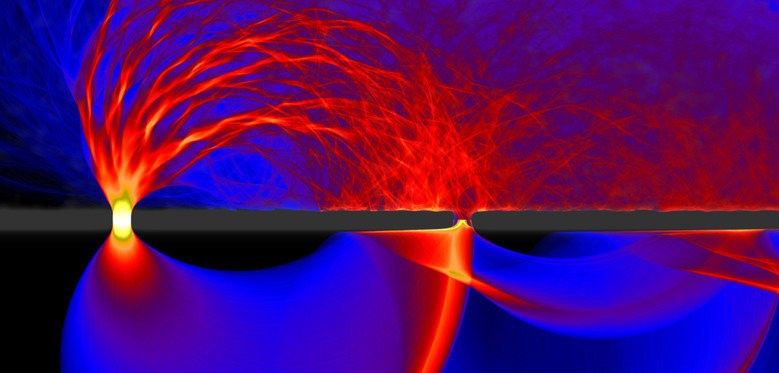
Dynamics in mesoscopic systems
Systems are called “mesoscopic“ when they are in between the micro- and the macrocosmos. The exact meaning of this can vary in different fields of physics. It often characterizes systems that are much larger than a few atoms or molecules (which have to be described quantum mechanically) but much smaller than typical objects of our everyday life (which can be well described by classical physics). In the solid state physics of electronic systems, for example, systems are usually called mesoscopic when they are considerably larger than the lattice constant of the atomic lattice of the solid and as the Fermi wave length of the electrons, but much smaller than the mean free path or coherence length of the electrons. This typically are systems in the nano- or micrometer regime, so called nanostructures.
We study the dynamics in such nanostructures. This research is closely connected to the questions asked in the field of “quantum chaos” or “wave chaos”, the study of the quantum- or wave-dynamics of complex, classically chaotic systems.
Mesoscopic effects, however, do not only occur on micrometer scales. A phenomenon which we investigate intensely is the branching of wave flows propagating through complex disordered media. Weak but correlated scattering events randomly focus the waves into characteristic branch-like structures. This branching of the flow is a mesoscopic effect that occurs at length scales much larger than the wavelength or the correlation length of the fluctuations in the medium but on scales much smaller than the mean free path of the waves, which characterizes the transition to universal “macroscopic” behavior. Branched flow, however, is not only observed in the electron current density in the two-dimensional electron gas of semiconductor devices. It can also be seen, for example, in the random focusing of tsunami waves by minute fluctuations of the ocean depth, on length scales of thousands of kilometers.